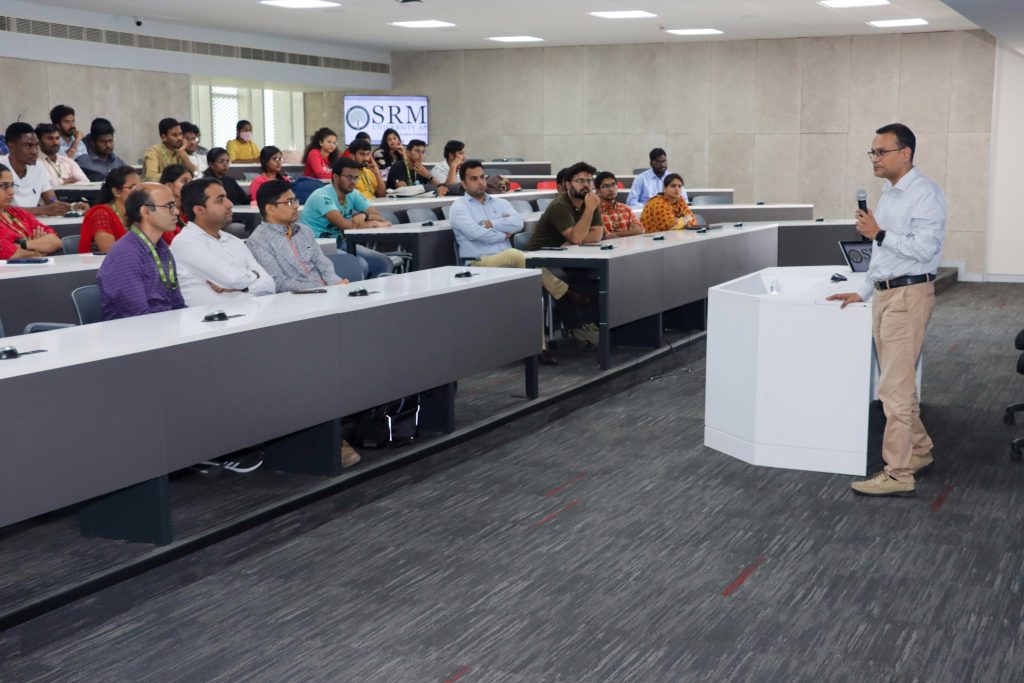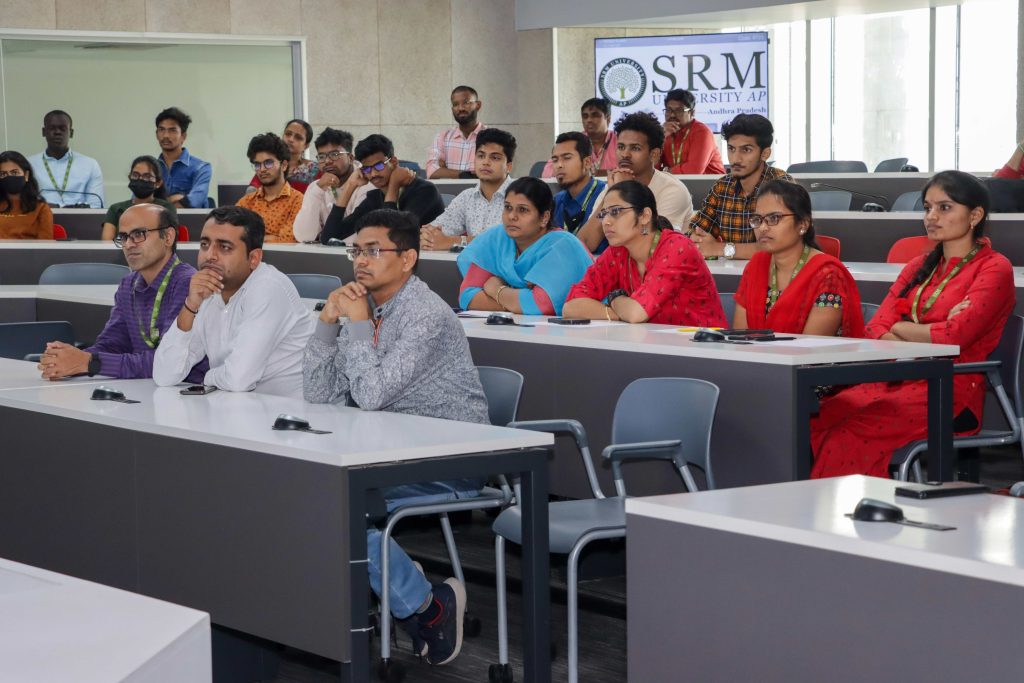Recent News
- Electrical Engineering – Your Way Forward! February 14, 2023
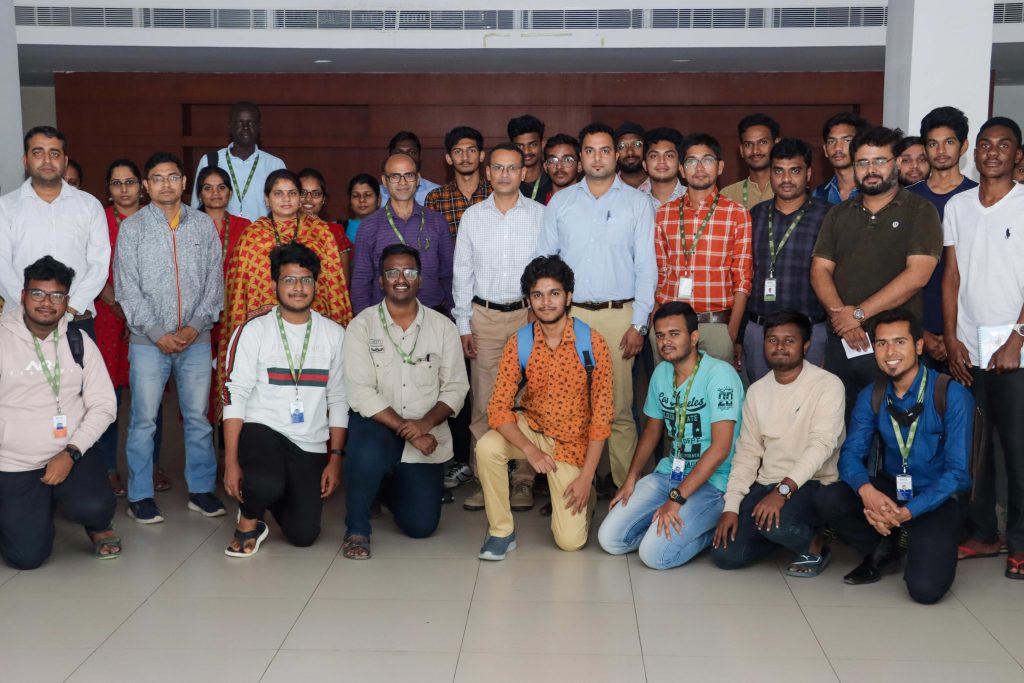
Electrical and Electronic Engineering is a core engineering course in the market with an aspiring number of students securing admissions to reputed universities. Yet with the advent of the modern software era, the dilemma of future job opportunities for Electrical Engineers has been buzzing around the students of the field. The Power & Control Society, Department of Electrical and Electronic Engineering organised an invited talk on February 02, 2023, on “Career Opportunities for Electrical Engineers” to empower and enlighten young graduates on potential career prospects in the field. Prof. Praveen Kumar of Electrical Engineering, Indian Institute of Technology, Guwahati was the distinguished speaker of the session.
Some of the frequently asked questions among Electrical Engineers are whether selecting Electrical Engineering as a core course instead of other engineering streams for their BTech degree was the right choice and whether it would hinder their career opportunities in this ever- transitioning job market. Nowadays, the engineering field is dominated by software and its application. It is quite evident that most jobs lie in the software or IT sectors, focusing more on coding and programming instead of our core streams.
Prof. Praveen Kumar addressed this pressing situation and reassured students that selecting the EEE stream was the right choice with it being an important core stream in the field of Engineering and giving flavour to understanding the physics behind the engineering model. He has addressed with examples of how such knowledge plays a major role when relating to other fields in any sector of the industry whether in assembling, production, AI, innovation etc. Prof. Kumar talked about coding and programming, reading syntax, and explained the importance of AI today, and how it plays an important role in engineering analysis such as Control theory, Electrical machines, Power electronics, Power systems etc. Prof. Kumar also highlighted different aspects of the transformation of the Nationwide EV ecosystem in India and encouraged students to learn various aspects of EV and solutions – To think and analyse the problem to create, innovate and present solutions per the market trend.
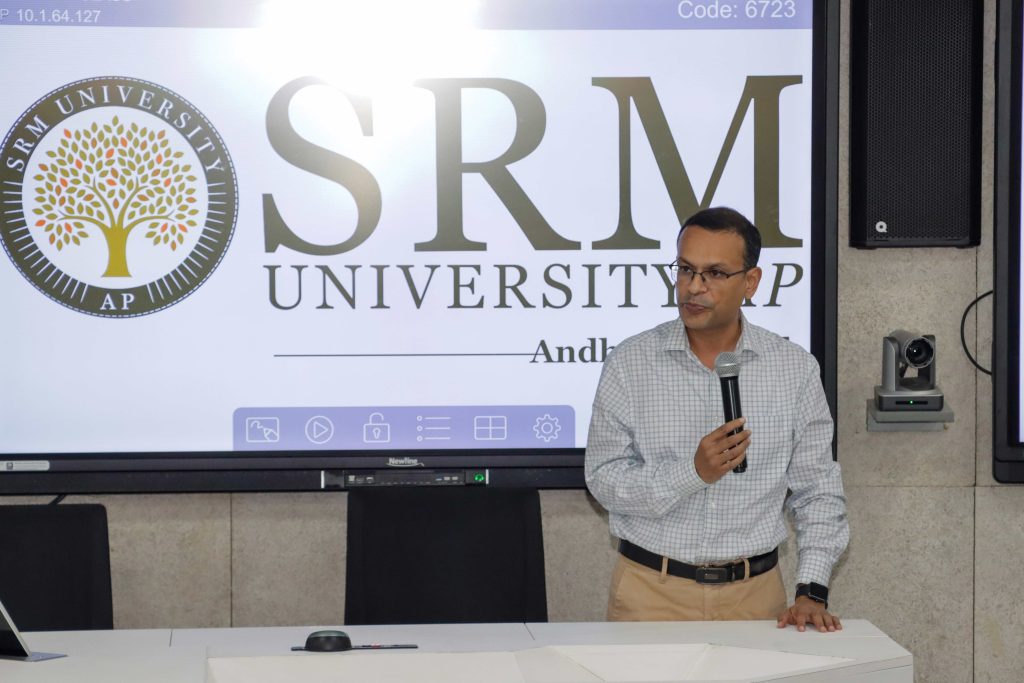
About the Speaker
A distinguished academician from the Indian Institute of Technology, Guwahati, Professor Praveen Kumar had completed his MTech from the Indian Institute of Technology, New Delhi. He was conferred with PhD from the Delft University of Technology, The Netherlands and is an expert in the fields of Electric Vehicles, Wireless Power Transmission and Electrical Machines.
Continue reading → - Young Researcher Award 2022 January 2, 2023
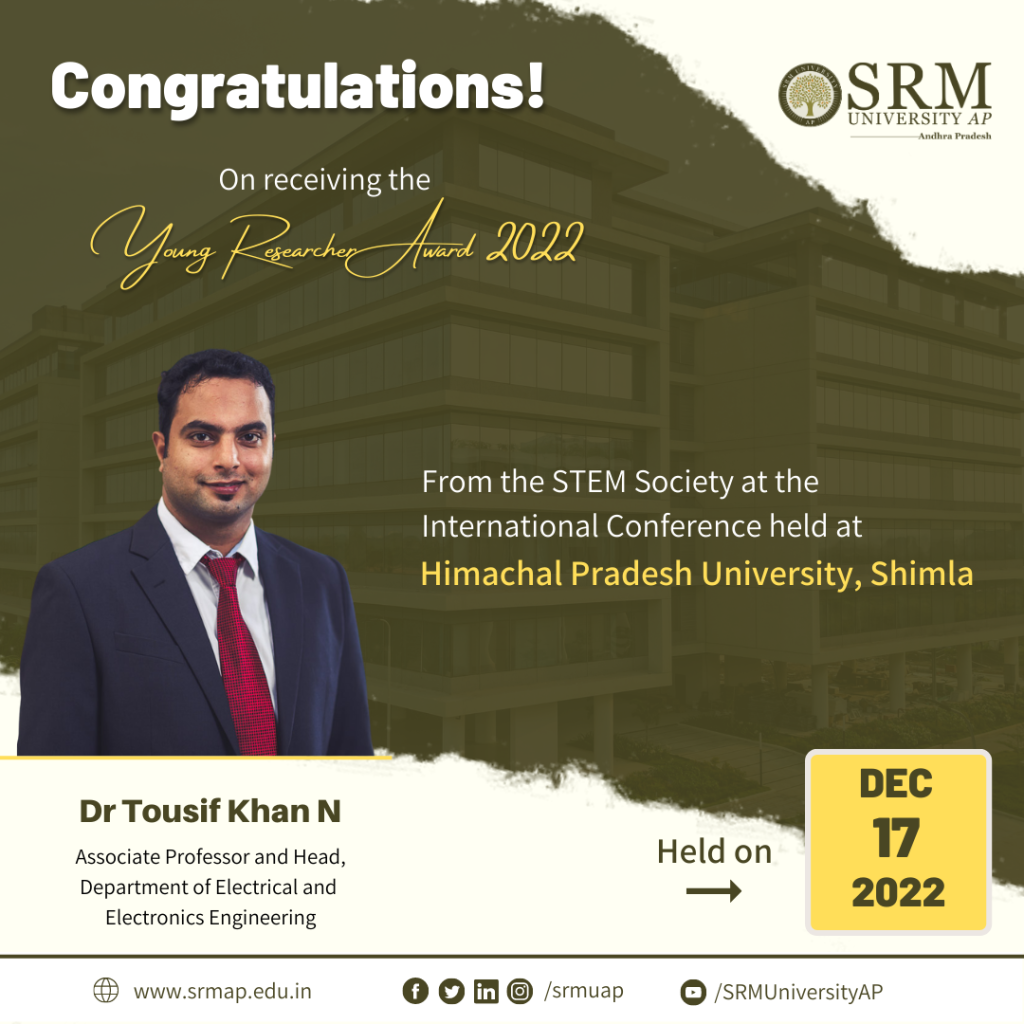
Dr Tousif Khan, Associate Professor and Head, Department of Electrical and Electronics Engineering has been awarded the “Young Researcher Award 2022” by the STEM Society at the International Conference organised at Himachal Pradesh University, Shimla on December 17, 2022. The basic purpose of the STEM-RS is to bring together Researchers, Academicians, Industrialists and Experts from different parts of the country and the world, to exchange knowledge and breakthrough ideas at a common platform by organising national and international events such as Conferences, Seminars and Workshops that unite the Science, Technology, Engineering and Management for the empowerment of research and development.
Continue reading → - EEE Students Visited Dr Narla Thatharao Thermal Power Station (NTTPS) December 16, 2022
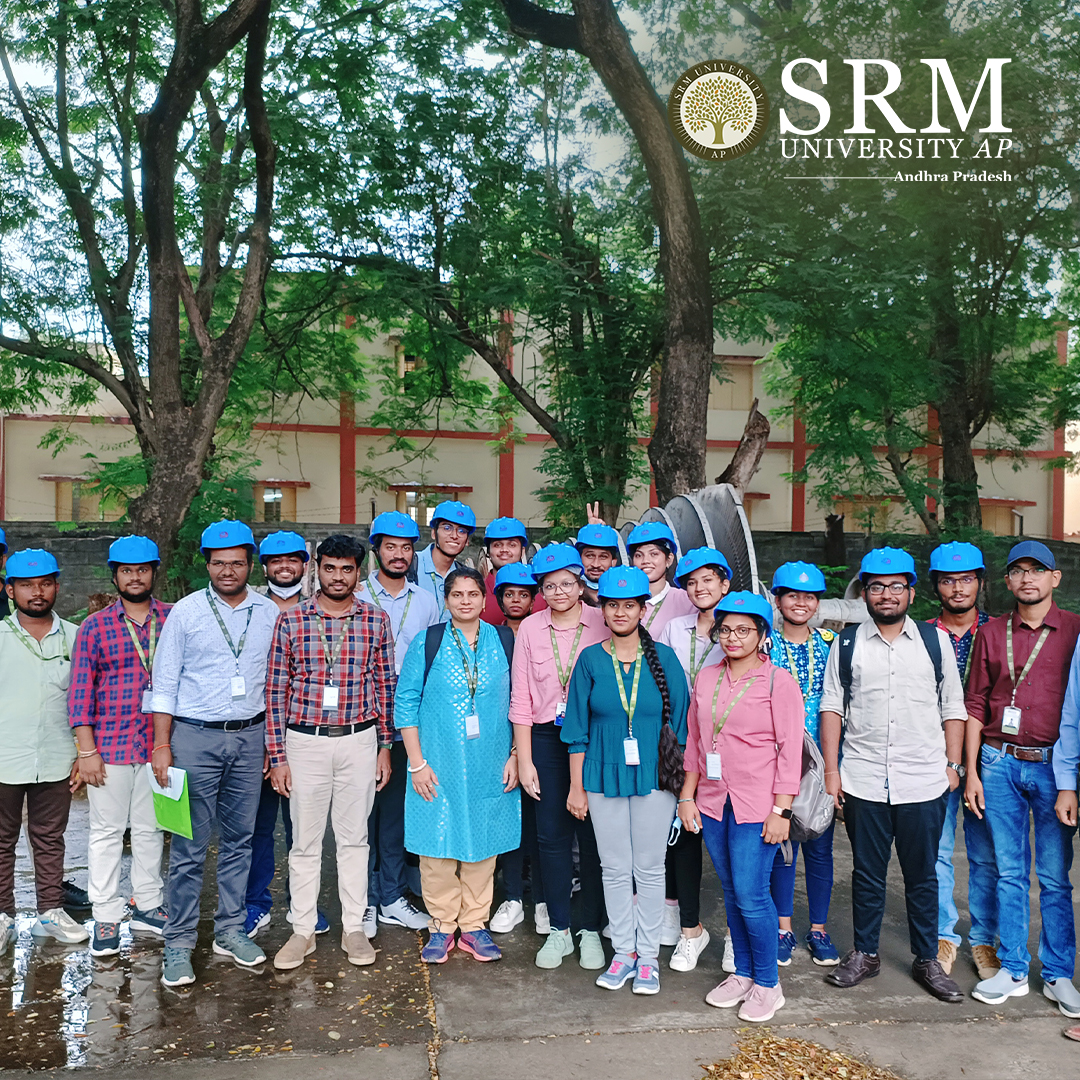 Industrial visit is an efficient learning strategy that nullifies the distance between academia and industry. Students and faculty of the Department of Electrical and Electronics Engineering visited Dr Narla Thatharao Thermal Power Station (NTTPS) on November 21, 2022. The objective of the visit was to give an overview of the Thermal Power plant, which is a coal-based power plant where coal is transported from coal mines to the power plant by railway in wagons or a merry-go-round system.
Industrial visit is an efficient learning strategy that nullifies the distance between academia and industry. Students and faculty of the Department of Electrical and Electronics Engineering visited Dr Narla Thatharao Thermal Power Station (NTTPS) on November 21, 2022. The objective of the visit was to give an overview of the Thermal Power plant, which is a coal-based power plant where coal is transported from coal mines to the power plant by railway in wagons or a merry-go-round system.The state-of-the-art construction and technologies amazed the students as they experienced an insightful industrial visit that exposed them to the actual working of a thermal power plant while enforcing their theoretical knowledge of Power Systems, Control Systems and Electrical Machines. Students from semesters one to four participated in the industry visit. Dr Somesh Vinayak Tewari, Dr Shubh Lakshmi, Dr Bhamidi Lokeshgupta, Dr Ramanjaneya Reddy U, and Dr Venkata Ramireddy Y were the faculty who accompanied the students.
A Detailed Account of the Industry Visit
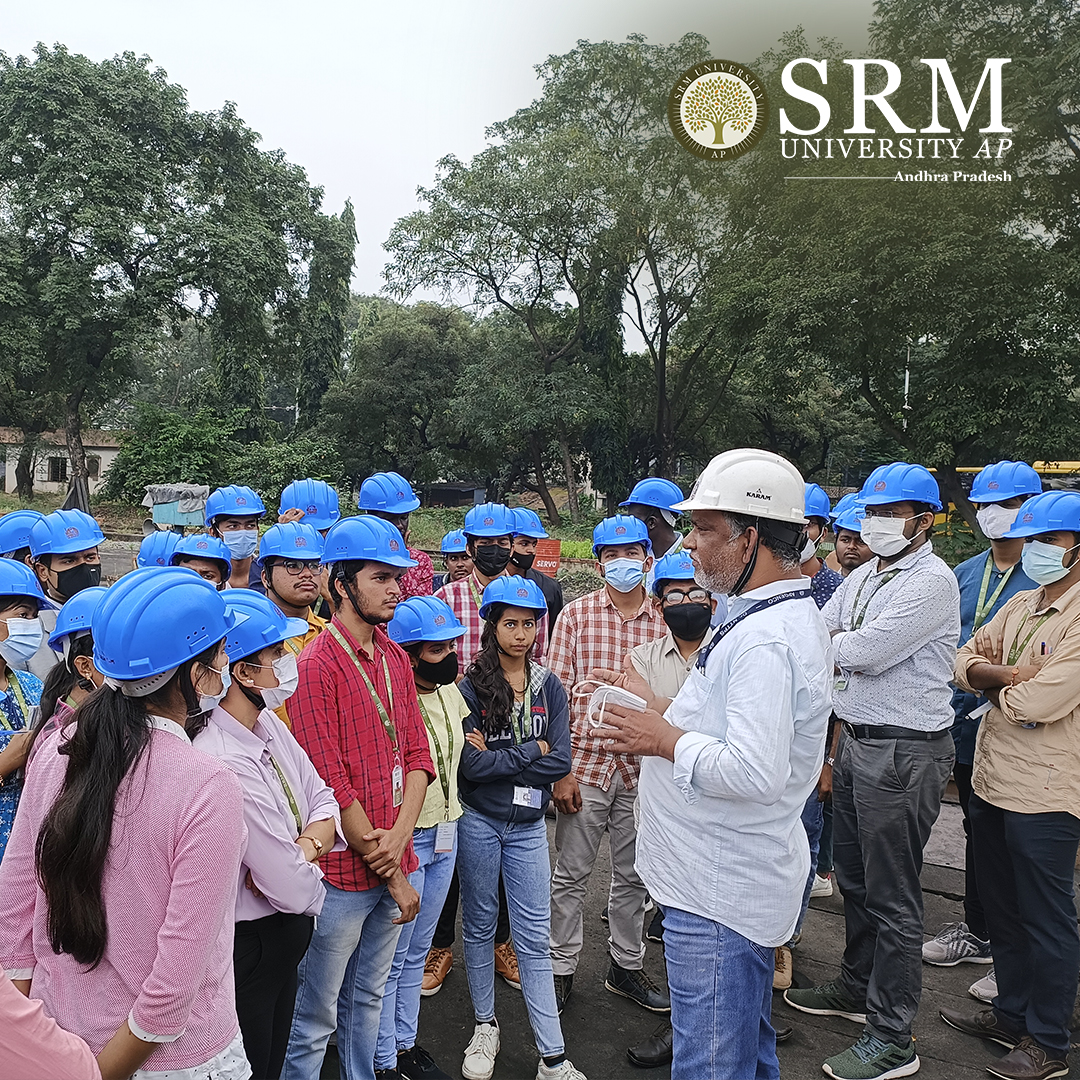 Coal is unloaded from the wagons using wagon tippler units to a moving underground conveyor belt. This coal from the mines is of no uniform size. So, it is taken to the Crusher house and crushed to a size of 20 mm. From the crusher house, the coal is either stored in dead storage, which serves as coal supply in case of coal supply bottleneck or to live storage in the raw coal bunker in the boiler house. Raw coal from the raw coal bunker is supplied to the Coal Mills by a Raw Coal Feeder. The Coal Mills or pulverizer pulverizes the coal. The powdered coal from the coal mills is carried to the boiler in coal pipes by high-pressure hot air. The pulverized coal air mixture is burnt in the boiler in the combustion zone.
Coal is unloaded from the wagons using wagon tippler units to a moving underground conveyor belt. This coal from the mines is of no uniform size. So, it is taken to the Crusher house and crushed to a size of 20 mm. From the crusher house, the coal is either stored in dead storage, which serves as coal supply in case of coal supply bottleneck or to live storage in the raw coal bunker in the boiler house. Raw coal from the raw coal bunker is supplied to the Coal Mills by a Raw Coal Feeder. The Coal Mills or pulverizer pulverizes the coal. The powdered coal from the coal mills is carried to the boiler in coal pipes by high-pressure hot air. The pulverized coal air mixture is burnt in the boiler in the combustion zone.Generally, in modern boilers, a tangential firing system is used where the coal nozzles/guns form a tangent to a circle. The temperature in the fireball is of the order of 1300˚C. The boiler is a water tube boiler hanging from the top. Water is converted to steam in the boiler, and steam is separated from water in the boiler Drum. The saturated steam from the boiler drum is taken to the Low-Temperature Superheater, Platen Superheater and Final Superheater, respectively, for superheating. The superheated steam from the final superheater is taken to the High-Pressure Steam Turbine (HPT). In the HPT, the steam pressure is utilised to rotate the turbine, and the resultant is rotational energy. From the HPT, the outcoming steam is taken to the Reheater in the boiler to increase its temperature as the steam becomes wet at the HPT outlet. After reheating, this steam is taken to the Intermediate Pressure Turbine (IPT) and then to the Low-Pressure Turbine (LPT). The outlet of the LPT is sent to the condenser for condensing back to water by a cooling water system. This condensed water is collected in the Hot well and sent to the boiler in a closed cycle. The rotational energy imparted to the turbine by high-pressure steam is converted to electrical energy in the Generator.
Continue reading → - Towards power quality improvement July 18, 2022
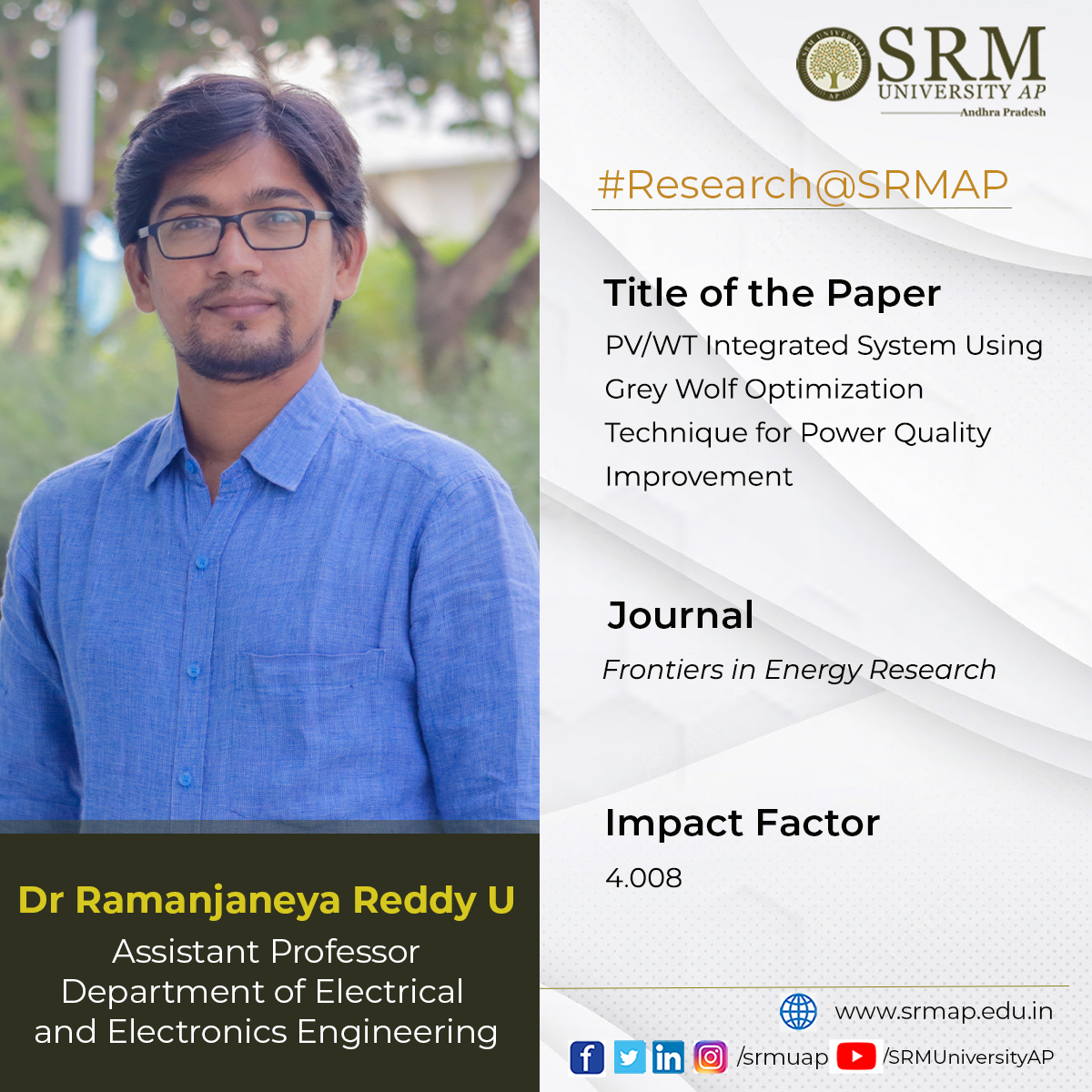 In future, there is a lot of scope for enhancing the power quality using various controllers whose gains are obtained using different optimisation techniques to mitigate several issues. Assistant Professor Dr Ramanjaneya Reddy, Department of Electrical and Electronics Engineering, envisions this tomorrow through his new research paper PV/WT Integrated System Using Grey Wolf Optimization Technique for Power Quality Improvement. The paper is published in the Process, and Energy Systems Engineering section of the Frontiers in Energy Research journal and has an impact factor 4.008. For this research paper, he has collaborated with Assistant Professor Srikanth Goud, Anurag College of Engineering Ghatkesar, Telangana.
In future, there is a lot of scope for enhancing the power quality using various controllers whose gains are obtained using different optimisation techniques to mitigate several issues. Assistant Professor Dr Ramanjaneya Reddy, Department of Electrical and Electronics Engineering, envisions this tomorrow through his new research paper PV/WT Integrated System Using Grey Wolf Optimization Technique for Power Quality Improvement. The paper is published in the Process, and Energy Systems Engineering section of the Frontiers in Energy Research journal and has an impact factor 4.008. For this research paper, he has collaborated with Assistant Professor Srikanth Goud, Anurag College of Engineering Ghatkesar, Telangana.Abstract
This work presents the integration of renewable energy sources such as PV and wind into the grid. Hybrid shunt active power filter (HSHAPF) is optimised with the grey wolf optimisation (GWO) and fractional order proportional integral controller (FOPI) for harmonic reduction under non-linear and unbalanced load conditions. With the use of GWO, the parameters of FOPI are tuned, effectively minimising the harmonics. The proposed model has effectively compensated the total harmonic distortions (THD) when compared with filter, without filter, with passive filter, active power filter with PI controller, and GWO- FOPI-based controller. The performance of the proposed controller is tested under non-linear and unbalanced conditions. The parameters of the FOPI controller are better tuned with the GWO technique. The comparative results reflect the best results of GWO-FOPI based HSHAPF. The suggested controller is built in the MATLAB/Simulink Platform.
Explanation of the research
Power quality (PQ) problems in the distribution system occur when non-linear loads are used. With the development in semiconductor technology, the modelling and usage of power electronic devices are increasing on the end-user side. Because of the usage of power, electronic devices give rise to many problems like a disturbance in reactive power, poor power factor, harmonic distortion, etc. These problems cause severe effects on the distribution system, which results in PQ issues. To mitigate PQ issues, there are many controlling techniques that ensure harmonic free. Initially, passive filter usage was widely considered for harmonic elimination and reactive power compensation. Due to various remarkable disadvantages like constant compensation performance, large size, resonance, etc., the usage became less. To mitigate the reactive power compensation and harmonics, active power filters (APF) became more prominent as the performance characteristics are very effective compared to conventional filters. APF is the device that generally produces an equal quantity of harmonics when compared with the load with a phase shift of 1800. These harmonics are injected into the linear PCC, load current harmonics mitigate, and supply becomes sinusoidal. The active power filters are broadly classified as series APF and shunt APF. The basic structure of shunt APF is illustrated in Figure.1, which mitigates the load current harmonics by inserting equal but opposite harmonic compensating current. Several authors have conducted research on grid integration using RES, active power filters, PQ issues, and various types of controllers designed to mitigate in the hybrid integrated system. In this work, THD reduction under non-linear load, unbalanced load without filter, with passive filter, with active power filter using a PI controller, and the proposed controller is introduced, which results in the best reduction of harmonics under various load conditions.
Practical implementation of the research
The proposed system is designed using both passive and active filters. The designed model improves the filer’s compensation characteristics, reducing the disadvantages of both active and passive filters. In this proposed work, HSHAPF is implemented with the combination of LC passive filter and voltage source PWM converter illustrated in Figure. 2, which illustrates the RES and HSHAPF connected to the grid. This design is tested at various loads, such as non-linear loads and unbalanced loads. Both filters’ characteristics are designed to provide the best performance under different operating conditions. To filter out the harmonics, the designed structure is modelled with storage systems using the battery, DC link and switches with antiparallel diodes. At PCC compensating current is injected using a voltage source converter to mitigate the harmonics. To overcome the power rating required for the PWM converter, the system is modelled using both active as well as passive filters to mitigate the harmonics. Here power MOSFETs are used in designing the PWM converters, which is cost-effective. To eliminate the harmonic at the PCC, equal and opposite magnitude harmonic current has to be injected, which also improves the PQ in the distribution system.
- Nature-inspired Seagull Optimisation Approach algorithm July 12, 2022
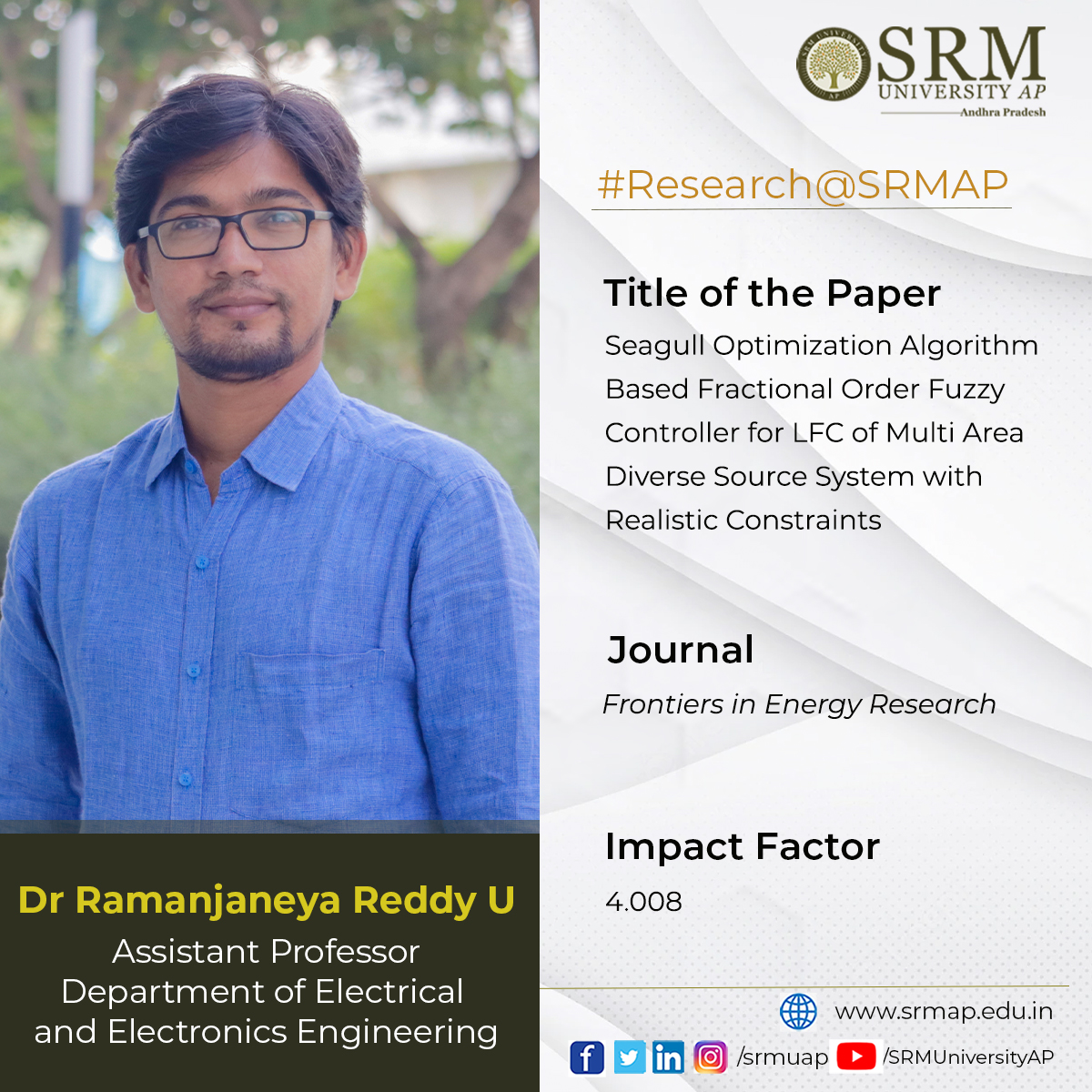 In modern days, the most potent ancillary service is the LFC, especially for controlling and operating interconnected power system networks. The electrical system is becoming more complex due to the integration of several diverse sources generating units to meet the variable load demand. Research in the Department of Electrical and Electronics Engineering is currently working on this area. Assistant Professor Dr Ramanjaneya Reddy recently published a paper titled Seagull Optimization Algorithm Based Fractional Order Fuzzy Controller for LFC of Multi Area Diverse Source System with Realistic Constraints in the Frontiers in Energy Research journal. It is published in the Smart Grids section of the journal with an impact factor of 4.008.
In modern days, the most potent ancillary service is the LFC, especially for controlling and operating interconnected power system networks. The electrical system is becoming more complex due to the integration of several diverse sources generating units to meet the variable load demand. Research in the Department of Electrical and Electronics Engineering is currently working on this area. Assistant Professor Dr Ramanjaneya Reddy recently published a paper titled Seagull Optimization Algorithm Based Fractional Order Fuzzy Controller for LFC of Multi Area Diverse Source System with Realistic Constraints in the Frontiers in Energy Research journal. It is published in the Smart Grids section of the journal with an impact factor of 4.008.Abstract
This paper initiates the implementation of fractional order (FO) fuzzy (F) PID (FOFPID) controller fine-tuned using a seagull optimisation algorithm (SOA) for the study of load frequency control (LFC). Initially, the SOA tuned FOFPID regulator is implemented to the widely utilized model of dual area reheat-thermal system (DARTS) named as test system-1 in this work for a perturbation of 10% step load (10%SLP) on area-1. Dynamical analysis of the DARTS system reveals the viability of SOA tuned FOFPID control scheme in regulating frequency deviations effectively compared to other control schemes covered in the literature. Later, the presented regulator is implemented in multi-area diverse sources (MADS) system possessing realistic constraints in this paper termed test system-2. The sovereignty of the presented FOFPID controller is once again evidenced with controllers of PID/FOPID/FPID fine-tuned with the SOA approach. Moreover, the effect of considering practical realistic non-linearity constraints such as communication time delays (CTDs) on MADS system performance is visualized, and the necessity of its consideration is demonstrated. Further, AC-DC lines are incorporated with MADS system to enhance the performance under heavy load disturbances and the robustness of the proposed regulatory mechanism is deliberated.
Explanation of the research
The operating point of the generation unit must be altered to keep the real power mismatch (RPM) as minimum as possible. RPM is the exact difference between the amount of real power generated by the generation units and the existing load demand. This RPM is the direct analogy to one of the power full parameters in the interconnected network, frequency. Thus, the minimisation of RPM should be monitored continuously as there will be continuous fluctuations in load demand. This must be done automatically. Otherwise, the real power mismatch may worsen and affect the power system frequency. Frequency regulation must be made with the utmost care; if not, it adversely affects the power system stability. LFC will quickly and automatically accomplish this task.
From the literature on LFC, it is apparent that the optimisation-based controllers significantly handle LFC performance. Hence, applications of new optimisation algorithms for solving realistic power system problems are always welcome. In this regard, this paper implements a new nature-inspired seagull optimisation approach (SOA) algorithm. It is a maiden attempt, especially for power system operation and control of IPS with practical constraints. Until now, the regulators presented by the researchers are tested on linearised and non-linearised power system models without and with integrating renewable energy units. To authenticate the investigative analysis of LFC closer to the nature of the realistic practice, the researchers must adopt the non-linearity constraints with power system models. Constraints of non-linearity like GRC and GDB are considered widely by the researchers and paid less attention to other constraints of CTDs.
In realistic practice, IPS are widely spread and employs numerous sensing and phasor measurement devices. The measured data will be transmitted and received among different devices located at distant places via communication peripherals. Exchange of information won’t be done instantly, and a specific time delay exists. The delay might affect the IPS performance; hence, this paper tried to investigate the predominancy of time delays in coordination with the constraint of GRC. Little work is available on studying LFC with CTDs and is restricted up to the implementation of traditional regulators. Thus, this paper addresses the impact of realistic constraint parameter that is CTDs on IPS performance in coordination with GRC under fuzzy aided FO-based regulator based on the newest optimization algorithm.
Practical implementations of the research
This work considered two different power system networks to assess the FOFPID controller performance. One is DARTS, termed test system-1, and the other is MADS, termed test system-2. DARTS model incorporates thermal units of reheat-type turbines in both areas with equal generation capacities. On the other hand, the MADS system that tests system-2 consists of two areas having Thermal-Hydro-Gas units in area-1, and area-2 comprises Thermal-Hydro-Wind units. The participation factor for each source of generation unit is allocated to achieve smooth load distribution and is considered as 0.6225 for thermal, 0.3 for hydro unit, and a factor of 0.075 for gas/wind unit. The required data to build the DARTS system depicted in Figure 1 and MADS system model depicted in Figure 2 are considered from [13] and [35], respectively. The power system models are designed in the (R2016a) version of MATLAB/SIMULINK.
In the future, there is a lot of scope for assessing the effect of CTDs on LFC performance and the implementation of SOA-based FOFPID for optimising IPS in the restructured environment.
Continue reading →


